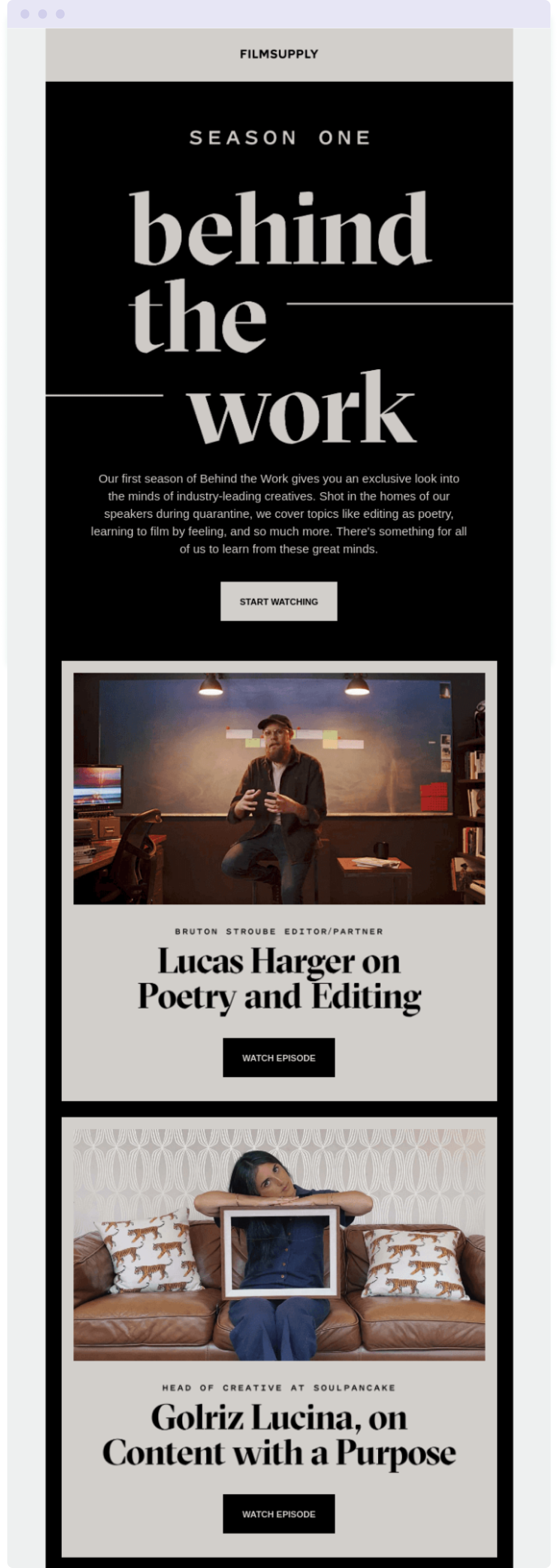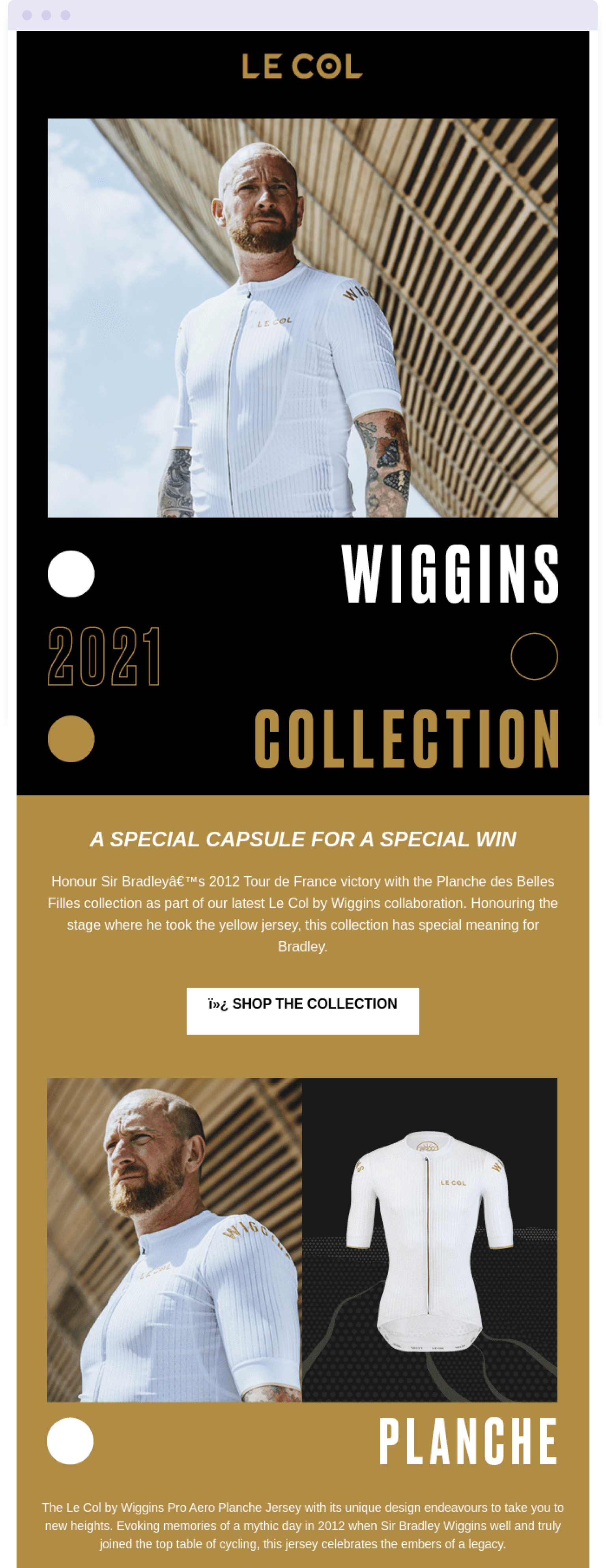If you’re even remotely active on social media, chances are you’re following an influencer. Even though the word influencer is sometimes used negatively, their stories still resonate with people across different target groups.
And brands can find a way to match the appeal of these content creators with their existing content marketing strategy when they share an audience with them.
It’s easy to understand why the influencer market has more than doubled in the last couple of years. However, this doesn’t mean you should just post a photo with a popular person showing your product on social media and call it a day.
There are multiple ways to make your strategy click with an influencer. And one of the best tools is email marketing. Campaigns that involve influencers are often limited to social media without considering the potential this collaboration holds for connecting with your audience on a more meaningful level.
So without further ado, let’s go over some tips that will help you get the most out of these campaigns and create email content that will tie in the influencers’ appeal with your brand’s authority.
Page Contents
Tip #1: Choose the perfect influencer
It’s never a good idea to choose an influencer solely based on their popularity. Some influencers work with lots of different brands and their endorsements can come off as insincere, while others don’t appeal to your audience.
That’s why the most important step of your campaign should be taking the time to dig deeper and find the perfect match.
Here’s an example from Fetching Fields, a company that specialises in organic dog treats. They partnered with a micro-influencer (Amanda) who shows a genuine love for her pet and features him (Henry the dog) in her own social media channels prominently.
As a consumer that already has a tie-in with their brand, she was a good match for the campaign that relies on somebody who’s using the product to showcase it.

As well as the niche an influencer is making content for, it’s also important to look for those that have a more loyal audience, as the overall number of followers can be deceiving. Using a tool for this can help you make the right pick and save time spent on hours of browsing profiles across social media.
The best influencer search tools will provide you with an overview of the creators in your niche, their audience, the engagement they get and other important metrics that can point you in the right direction.
You may even decide that it’s better to work with multiple micro influencers, rather than putting focus on a single creator with a following that’s measured in hundreds of thousands. For example, you could run a series of email campaigns featuring a different influencer each time.
Tip #2: Try social listening
It’s also a good idea to listen to your audience – take a look at who your customers are following on social media and try finding an overlap with your planned activities.
Also, be mindful of what goes on in your industry, and use the trends that you see in your niche as a base for your email campaigns. For example, the increasing emphasis on mental wellbeing might inspire an influencer campaign, like it did for Calm – the popular mindfulness app.

In addition to trends and customer activity, it’s always useful to track your competitors’ activities and keep an eye on who they’re working with. This is helpful in multiple ways.
Firstly, it will help you see what size of influencers they’re targeting, and how their audience is reacting. Secondly, it’ll help you eliminate influencers that have already promoted your competitors. Lastly, if you find that your competitors are not working with any influencers, even better – that leaves the territory wide open for you.
Tip #3: Let the influencer lead
When you’ve decided which influencer you’re going to work with, it’s essential not to treat them just as paid actors. Whether the goal of your email marketing campaign is conversions, website visits or awareness, collaborating with influencers will provide the social proof that can help you achieve it.
And the emphasis is on collaboration. You should let the influencer tell the story from their perspective, based on your inputs.
How you do this will depend on your goals, your product or service, and the influencer’s style. But when you let their personality shine through, it’ll be easier for your audience to relate and react positively.
By putting an influencer’s genuine experience with your product or service in your emails and having them delivered in a personal way, they’ll seem more like a recommendation from a friend, rather than a promotion.
Take this example from wellness brand Prima, who worked with wellness thought leaders to promote their products with plenty of social proof.

Ideally, your influencer is someone who already uses your product/service, and is therefore familiar with what your brand stands for. This enables them to create genuine testimonials.
Same as you would do with a satisfied client or customer, you can give the influencer space to talk about the ways you help them overcome a challenge and things they liked in the process. This is especially applicable to micro influencers that are likely to be your audiences’ peers.
If you’re collaborating with someone more established in the niche, you can have them do some opinion pieces, such as reviews and explainers that you’ll tie in with your product and make a regular part of your emails to customers.
Depending on the length of your collaboration with the influencer, you can have them create content that’s not directly about your brand. For example, you can start by having them provide useful tips for your audience that will generate engagement, and introduce your product into the mix later on. This could work as a series of short blogs or videos that you’d include in your emails.
The “Behind the Work” serial from Filmsupply is a good example of how content can be used with this goal in mind.

Of course, you will check all of the content personally. But the content creators will appreciate the space that you give them and will be more likely to deliver something more personal.
Tip #4: Pick the right occasion
There’s no wrong time to start with your email campaign, but timing the influencer collaboration and using the reach that they provide at just the right time can give you a massive boost in results.
If you’re preparing a product launch, the right person can be there to increase the buzz, help with the build-up and deliver the details when the date comes.
Alternatively, different influencers can be there for different phases of the product launch. An influencer who has a strong voice in the industry can take part in the announcements, helping you boost visibility by talking about what’s coming. Then, others with a smaller following can continue the promotion after the launch, with content such as reviews that you can include in your email marketing campaigns.
Another great occasion to involve influencers is a big promotion, such as a seasonal discount, special offer or a new collection. You could even create a new product with an influencer, like Le Col did for a cycling kit with Olympic cyclist Bradley Wiggins.

Similarly, if there’s an important event coming up, the endorsement and presence of an influencer can help you boost attendance. Have the influencer extend an invitation and talk to your audience about the agenda in emails leading up to the occasion. If you picked the right person, this can cause significant word-of-mouth success and even attract the attention of relevant industry media channels.
Tip #5: Think about additional channels for promotion
In addition to a strong email campaign, you can integrate other channels into your influencer marketing strategy.
One of the simplest extensions are your social media profiles and those of the influencer’s. They can invite their audience to subscribe to your newsletter where they’ll be appearing, building both campaign and brand awareness, while you also get more buzz for your content when you share their posts and mention them.
Influencers can also offer additional incentives to their followers. Use promo codes or referrals for the audience coming off your collaborator’s channels to increase both conversions and future leads. It can be as simple as creating a contest on their social media that includes signing up to your newsletter as one of the requirements.

Depending on the length of your collaboration, you can also create additional pieces of content that will appear elsewhere, such as your website or your YouTube channel. This can generate two-way traffic – tease the content in your emails and direct the audience to the channel where they can see the rest, while also encouraging the audience on social media to subscribe to your newsletters.
By creating appealing content with the influencer, such as a video series that’s specially crafted for your audience, you can get more subscribers both from the newsletter subscribers who weren’t interested in other channels before and from the creator’s following.
Wrapping up
Overall, working with influencers can bring many benefits to your brand. Social proof is always a great way to get a fresh perspective on your product, while an established content creator can increase your authority with their existing audience.
Picking the right person to collaborate with for your email campaigns is crucial – it should always be someone relevant to your niche, while also already having an audience of their own. Put them in the spotlight of authentic content instead of a generic ad that just lists out the awesome things that your product does. And give them space to be true to their own personal brand.
Think about the best time to involve them and act in a timely manner to get the most out of your collaboration. If possible, look to extend to channels beyond email to both reinforce the campaign and create a base for future efforts.
Keep tracking the results and don’t be afraid to work with successful collaborators again or even make them brand ambassadors, as it helps strengthen your brand’s position.
Author bio
Andrii Kalashnyk is the CMO at trendHERO with 9+ years of experience in digital marketing. He started out as an email marketing manager, moving onto copywriting, and for the last three years has been focused on analytics and influencer discovery.


No Comments
Leave a comment Cancel